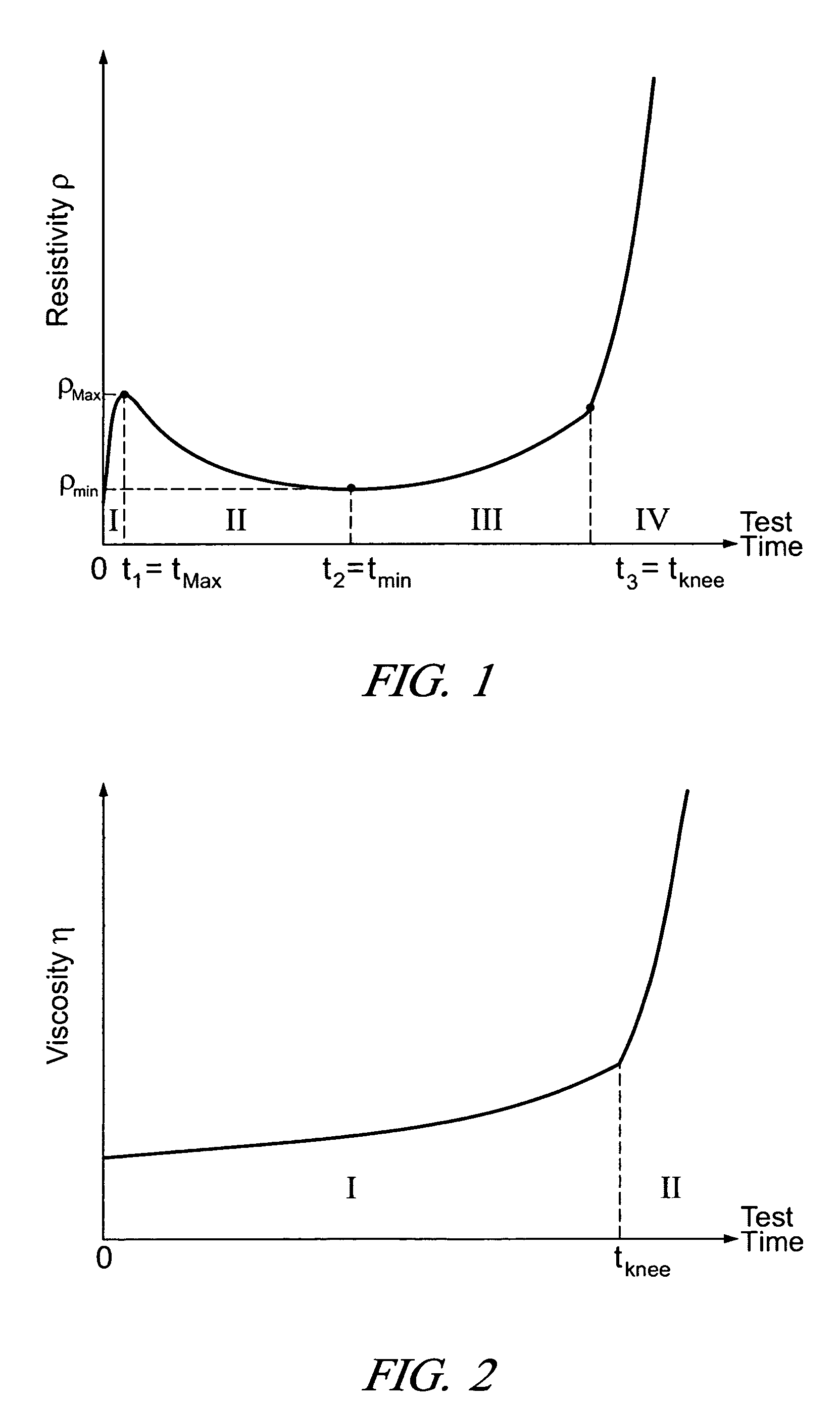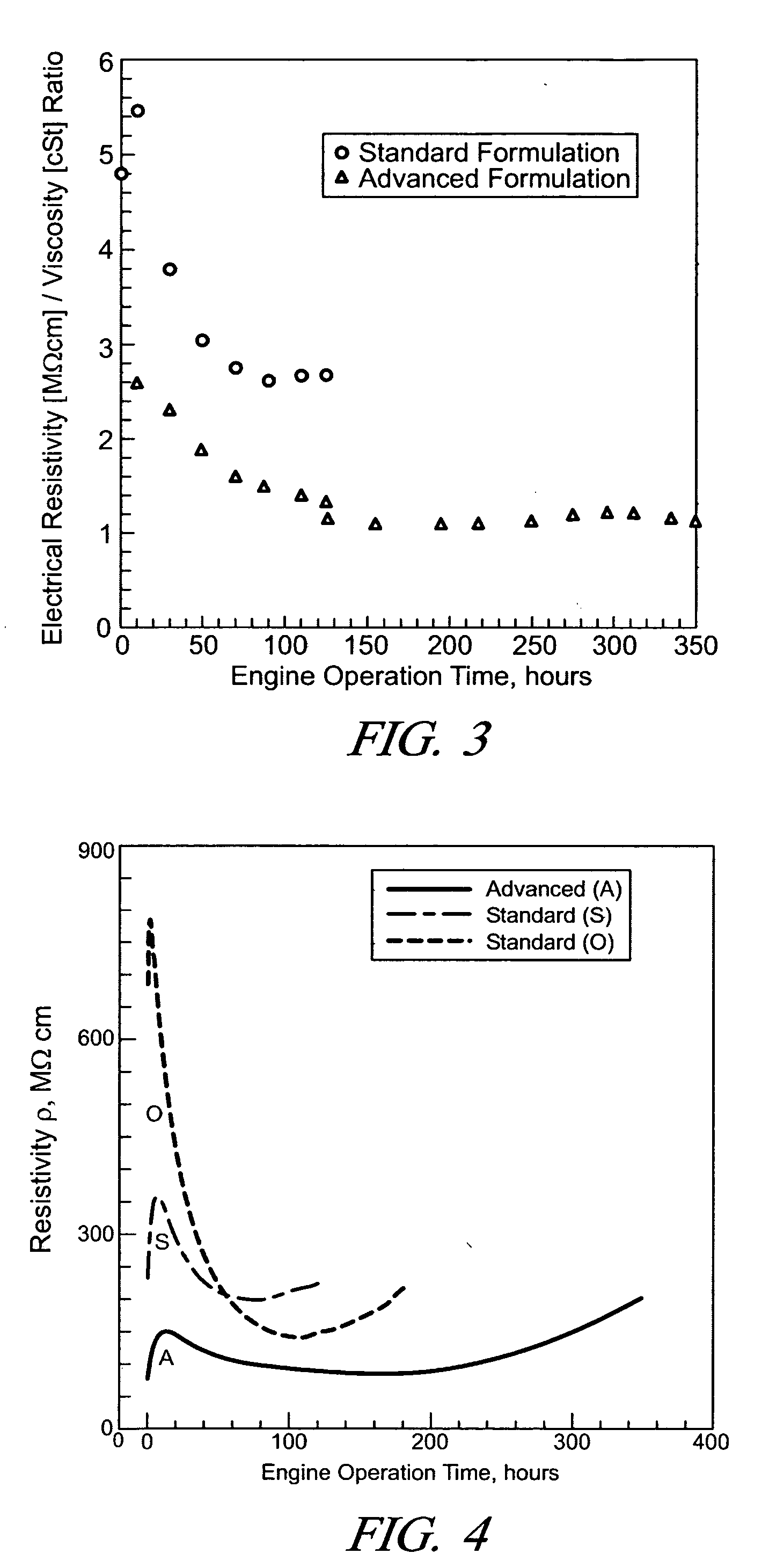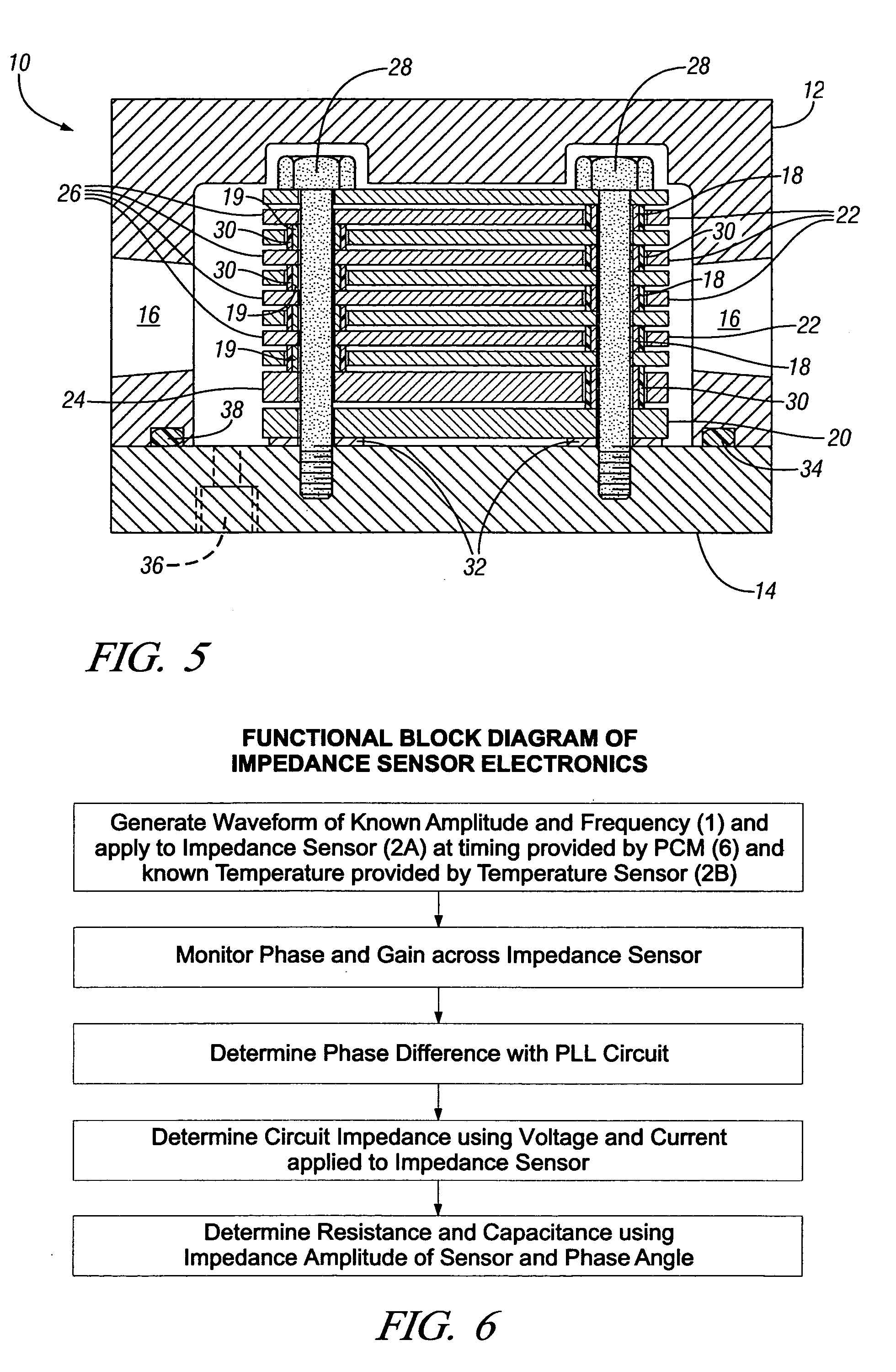Determining quality of lubricating oils in use
a technology of lubricating oil and quality, applied in the direction of lubricant composition, resistance/reactance/impedence, instruments, etc., can solve the problems of randomizing dipole orientation and dislocating this alignment, so as to slow down the randomizing effect of thermal motion, slow down the rotation of dipoles, and achieve higher complexity
- Summary
- Abstract
- Description
- Claims
- Application Information
AI Technical Summary
Benefits of technology
Problems solved by technology
Method used
Image
Examples
Embodiment Construction
[0021] This invention is a method for determining the quality and useful life of an engine lubrication oil. The method uses a suitable lubricating oil flow-through electrical impedance sensor for monitoring electrical properties of the oil in use in an engine or other operating mechanism. And the practice of the method is supported by suitable electronic instrumentation.
The Method.
[0022] It is difficult to make a priori predictions regarding the time dependences for the permittivity and electrical conductivity of engine oils, since they are complex fluids involving a mixture of numerous molecular compounds and one factor or another can prevail over all others during a limited period from the operating lifetime of an engine oil, with the balance changing with oil usage. However, a few general trends may be predicted, based on the general usage conditions of the oil and from the known behavior of the oil viscosity during its useful lifetime, barring the overriding influence of othe...
PUM
 Login to View More
Login to View More Abstract
Description
Claims
Application Information
 Login to View More
Login to View More - R&D
- Intellectual Property
- Life Sciences
- Materials
- Tech Scout
- Unparalleled Data Quality
- Higher Quality Content
- 60% Fewer Hallucinations
Browse by: Latest US Patents, China's latest patents, Technical Efficacy Thesaurus, Application Domain, Technology Topic, Popular Technical Reports.
© 2025 PatSnap. All rights reserved.Legal|Privacy policy|Modern Slavery Act Transparency Statement|Sitemap|About US| Contact US: help@patsnap.com



